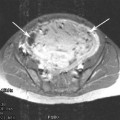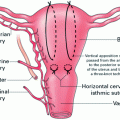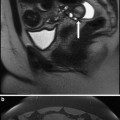Fig. 1
Quality of evidence
2.1 EBM Pyramid
In Fig. (1) arrow indicates the direction of increasing quality of evidence with meta-analyses of randomised trials at the top and expert opinion at the bottom.
2.2 Levels of Evidence
Scottish Intercollegiate Guidelines Network: Key to Evidence Statements (http://www.sign.ac.uk/guidelines/fulltext/50/annexb.html)
1++ High quality meta-analyses, systematic reviews of RCTs, or RCTs with a very low risk of bias
1+ Well-conducted meta-analyses, systematic reviews, or RCTs with a low risk of bias
1− Meta-analyses, systematic reviews, or RCTs with a high risk of bias
2++ High quality systematic reviews of case control or cohort or studies
High quality case control or cohort studies with a very low risk of confounding or bias and a high probability that the relationship is causal
2+ Well-conducted case control or cohort studies with a low risk of confounding or bias and a moderate probability that the relationship is causal
2− Case control or cohort studies with a high risk of confounding or bias and a significant risk that the relationship is not causal
3 Non-analytic studies, e.g. case reports, case series
4 Expert opinion
2.3 Grades of Recommendation (http://www.sign.ac.uk/guidelines/fulltext/50/annexb.html)
The grade of recommendation relates to the strength of the evidence on which the recommendation is based. It does not reflect the clinical importance of the recommendation.
A
At least one meta-analysis, systematic review, or RCT rated as 1++, and directly applicable to the target population; or
A body of evidence consisting principally of studies rated as 1+ , directly applicable to the target population, and demonstrating overall consistency of results
B
A body of evidence including studies rated as 2++, directly applicable to the target population, and demonstrating overall consistency of results; or
Extrapolated evidence from studies rated as 1++ or 1+
C
A body of evidence including studies rated as 2+ , directly applicable to the target population and demonstrating overall consistency of results; or
Extrapolated evidence from studies rated as 2++
D
Evidence level 3 or 4; or
Extrapolated evidence from studies rated as 2+
Good Practice Points
Recommended best practice based on the clinical experience of the guideline development group.
3 Outcome Measures
One of the fundamental issues for any study is the setting and definition of appropriate outcome measures. These need to reflect the needs of all the stakeholders which include the patient, staff and healthcare providers. Table 1
Table 1
Outcome measures
Safety data |
Mortality |
Morbidity |
Efficacy |
Patient focussed outcomes (QoL) |
Generic e.g. SF36, EuroQol5D |
Disease specific e.g. UFSQol |
Pelvic floor function scores |
Qualitative research—patient satisfaction |
Surrogate outcomes |
Imaging outcomes (infarction rates, volume reduction) |
Objective menstrual loss |
Long-term follow up |
Need for further treatment (hysterectomy, myomectomy, repeat UAE) |
Cost-effectiveness |
QALY |
Although from a purely scientific stance hard endpoints such as objective menstrual blood loss and volume reduction have their place they have been increasingly replaced by patient focussed outcomes. For example menstrual blood loss is a very subjective symptom and the objective reduction is of little interest to patients. Similarly the magnitude of uterine volume reduction is irrelevant unless associated with improvement of quality of life. The UFSQoL is the first and only fibroid specific questionnaire introduced in 2002 (Spies et al. 2002). This validated instrument consists of 38 questions, the first 8 give a symptom score and the remaining 29 a QoL score (6 domains, concern, activities, energy/mood, control, self-consciousness and sexual function.). The response options for the first 8 questions are presented as five point Likert scales where 1 = “not at all” and 5 = “a very great deal” in response to “how distressed were you by ?” For questions 9–37, the response options also are on a Likert scale where 1 = “none of the time” and 5 = “all of the time” in response to questions about health-related quality of life. Now considered the standard in assessing response to fibroid treatment it was not available for most of the randomised controlled trials.
4 Systematic Reviews and Meta-Analyses
4.1 Cochrane Review
The first Cochrane review of UAE was published in 2006 and then updated in 2011 (Gupta et al. 2006). Four trials were identified, two compared UAE with abdominal hysterectomy in 234 women (PINTO & EMMY). A third trial (REST) compared UAE with surgery (hysterectomy & myomectomy) in 157 women. The fourth trial (MARA) included 121 women and compared UAE with myomectomy in those wishing to preserve fertility.
The conclusions were that UAE significantly reduced hospital stay and time to resume normal activities. However UAE was associated with significantly higher rates of minor complications (OR 2.39, CI 1.55–3.7), unscheduled visits and readmissions after discharge (OR 2.5, 95 % CI 1.38–4.51). The re-intervention rate after 5 years follow up was significantly higher in the UAE group (OR 5.79, 95 % CI 2.65–12.65) and balanced out any earlier cost advantages of UAE over surgery. There was no difference in ovarian failure rates at long-term follow up. The only trial looking at fertility outcomes concluded that myomectomy appeared to have superior reproductive outcomes in the first 2 years.
The authors’ conclusions were “UAE offers an advantage over hysterectomy with regards to a shorter hospital stay and a quicker return to routine activities. UAE appears to have an overall patient satisfaction rate similar to hysterectomy and myomectomy. Women opting for UAE should be counselled that there is a high surgical intervention rate in the longer term (at 5 years)”.
The review points out the risk of detection bias due to no blinding of either participants or physician and that all the trials were small. Finally the single trial looking at fertility issues limits any conclusion to be made regarding the effects of UAE on fertility and future pregnancy.
4.2 Systematic Review and Meta-Analysis
The group in Holland who conducted the EMMY trial have recently (2011) produced a systematic review and meta-analysis of the current literature (Van der Kooij et al 2011). Only RCT`s (REST, EMMY, MARA, PINTO) were included with a total pool of 515 women. There is much overlap with the Cochrane review but in summary short term outcomes such as blood loss, hospital stay and return to work were all significantly shorter than surgery. Mid- and long-term results showed similar health-related quality of life results but a significantly higher re-intervention rate after UAE. Both groups showed a similar and high degree of satisfaction with either surgery or UAE.
It was noted that a considerable number of the hysterectomies and myomectomies were carried out by an open abdominal approach skewing recovery times in favour of UAE. Advances in minimally invasive surgical approaches might narrow the gap.
5 Trials
The published trials are summarised in Table 2
Table 2
Trials summary
PINTOn = 60 | MARA n = 121 | EMMY n = 177 | REST n = 157 | FUME n = 163 | ||||||
|---|---|---|---|---|---|---|---|---|---|---|
Primary outcome measure | Menorrhagia | Pregnancy | Menorrhagia | QoL | QoL | |||||
Procedure | UAE | Surgery (H) | UAE | Surgery (M) | UAE | Surgery (H) | UAE | Surgery (H/M) | UAE | Surgery (M) |
Randomised allocation | n/aa | n/aa | 58 | 63 | 88 | 89 | 106 | 51 | 82 | 81 |
Technical success (%) | 90 | 100 | 90 | 92 | 83 | 100 | 97 | 98 | 97 | 98 |
Minor complications (%) | 72b | 45b | 21b | 16b | 64c | 56c | 47e | 28e | 13d | 11d |
Major complications/Adverse events (%) | 5c | 3c | 19e | 25e | 3d | 8d | ||||
QoL | n/a | n/a | n/a | n/a | nse | nse | nse | nse | nsd | nsd |
Re-intervention rates (%) | 10 | n/a | 33d | 3d | 28e | 11e | 32e | 4e | 14d | 3d |
5.1 PINTO
The first RCT from Spain published in 2003 was small, single centre and the methodology was unusual using the Zelen design (Pinto et al. 2003). Patients were randomly assigned to one of two groups: patients in the first group were informed about UAE and the alternative of hysterectomy and the other group was not informed of the option of UAE and underwent hysterectomy. All subjects had menorrhagia and fibroids >10 cm and those wishing to maintain fertility were excluded. Although initially 38 patients were assigned to first and 19 to second group, towards the end of study 40 patients underwent UAE and 20 hysterectomy. The primary outcome measure was length of hospital stay; secondary outcomes included satisfaction scores, return to work and complications. Although the primary outcome was assessed on the intention to treat principle (ITT) others such as safety and efficacy used the actual treatment received due to crossover from the groups. The technical success rate for the UAE arm was low at 88 %.
Complications occurred in 72 % (UAE group) and 45 % (hysterectomy group) respectively. Many of the UAE complications were minor and included the post embolisation syndrome. Hospital stay was significantly shorter in UAE group. A relatively high number of patients in both groups presented to the emergency department following hospital discharge, 32 % (UAE group) and 20 % (hysterectomy group). Five percent in each group were re-admitted to hospital. There was no further follow up beyond 6 months.
5.2 MARA
This single centre RCT from the Czech Republic randomised 121 patients between myomectomy and UAE. The initial results were published in 2006 with reproductive outcomes in 2008 (Mara et al. 2006; Mara and Maskova 2008). All had symptomatic fibroids and were planning to conceive. Exclusion criteria included the dominant fibroid being either submucosal or subserosal and any fibroid >12 cm. Of the 63 myomectomies 41 were laparoscopic and 21 open. Gonadotrophin levels were assayed.
The UAE group had a significantly shorter duration of procedure, hospital stay and recovery period. Imaging was performed at 6 months and if there were persistent fibroids >5 cm present then a myomectomy was recommended in both groups. This strategy resulted in a re-intervention rate of 33 % (UAE group) and 3 % (myomectomy group) respectively. No significant differences were seen in technical success rate, symptom control, re-intervention for fibroid recurrence or complications between the groups.
During the mean follow up period of 25 months, there were more pregnancies (33), labours (19) and fewer abortions (6) in the myomectomy group compared to UAE pregnancies (17), labours (5) and abortions (9). It was concluded the myomectomy group had a greater chance of pregnancy.
5.3 EMMY
This multicentre Dutch RCT randomised 177 patients between UAE and hysterectomy. The investigators have published 6 separate papers reporting a variety of different outcomes measures including follow up to 5 years (Volkers et al. 2006; 2007




Stay updated, free articles. Join our Telegram channel

Full access? Get Clinical Tree






